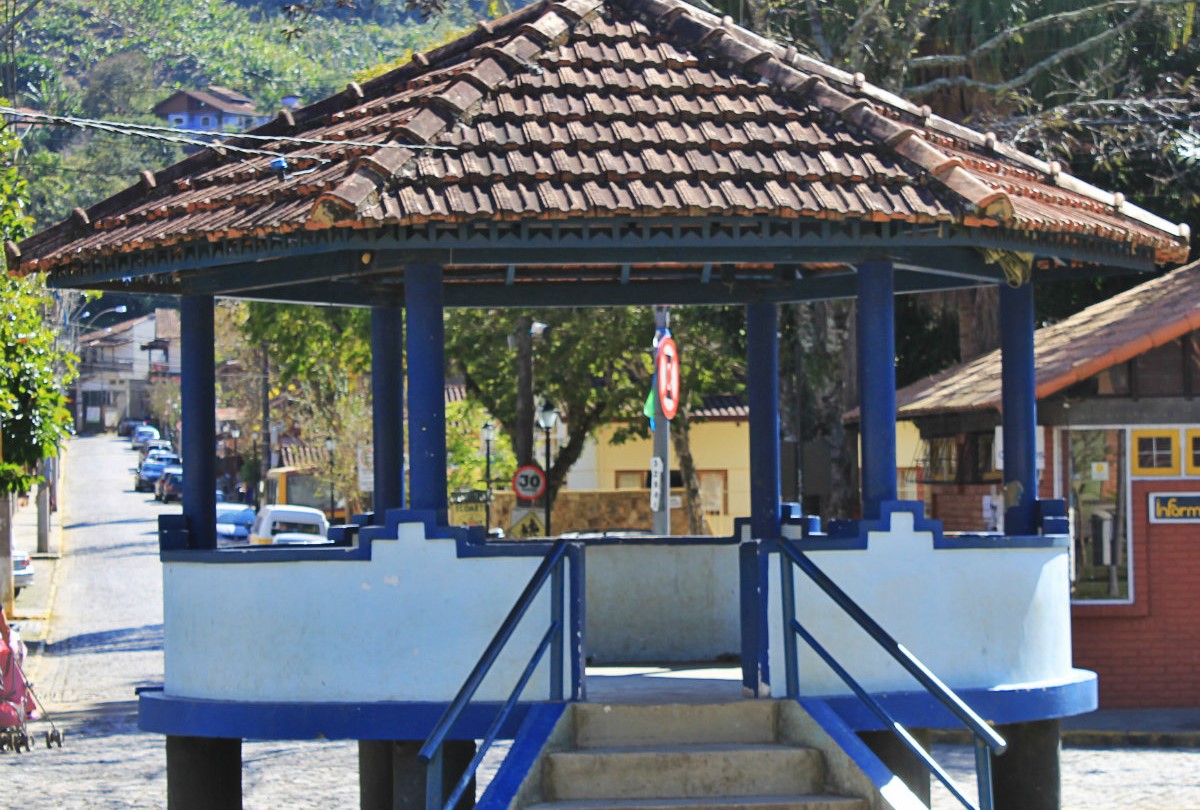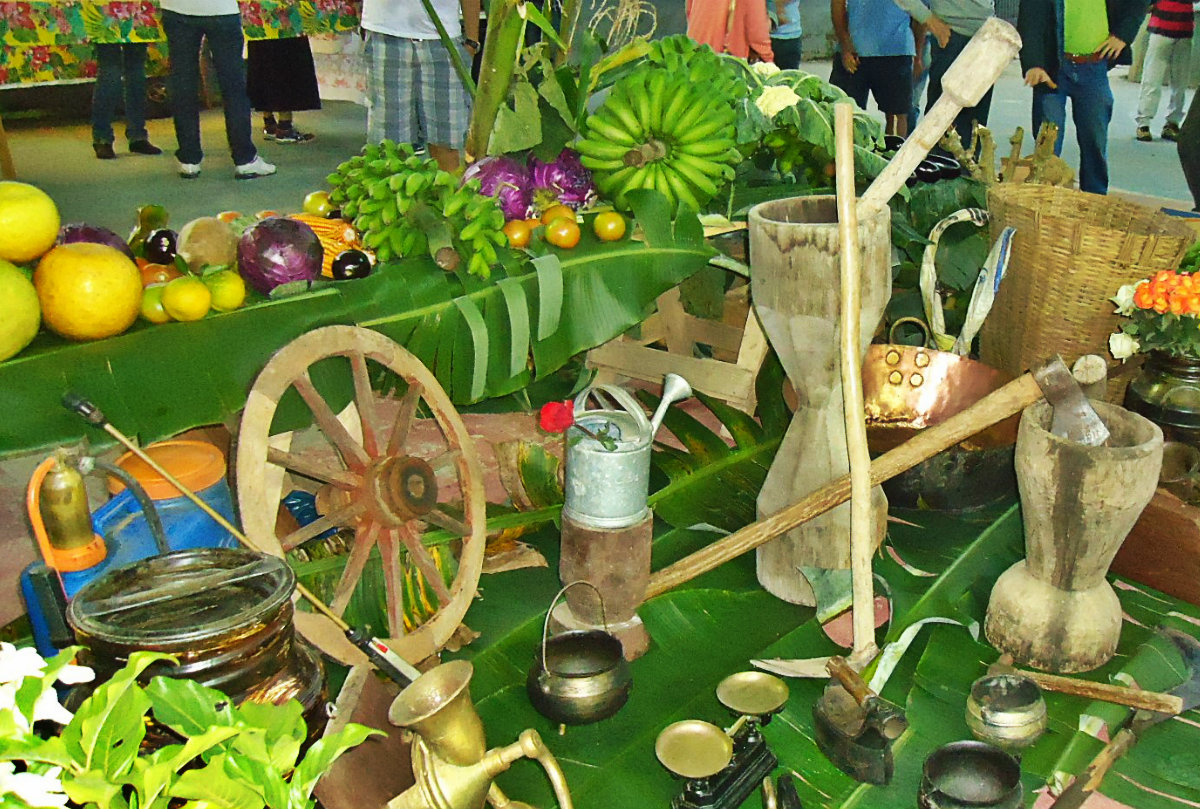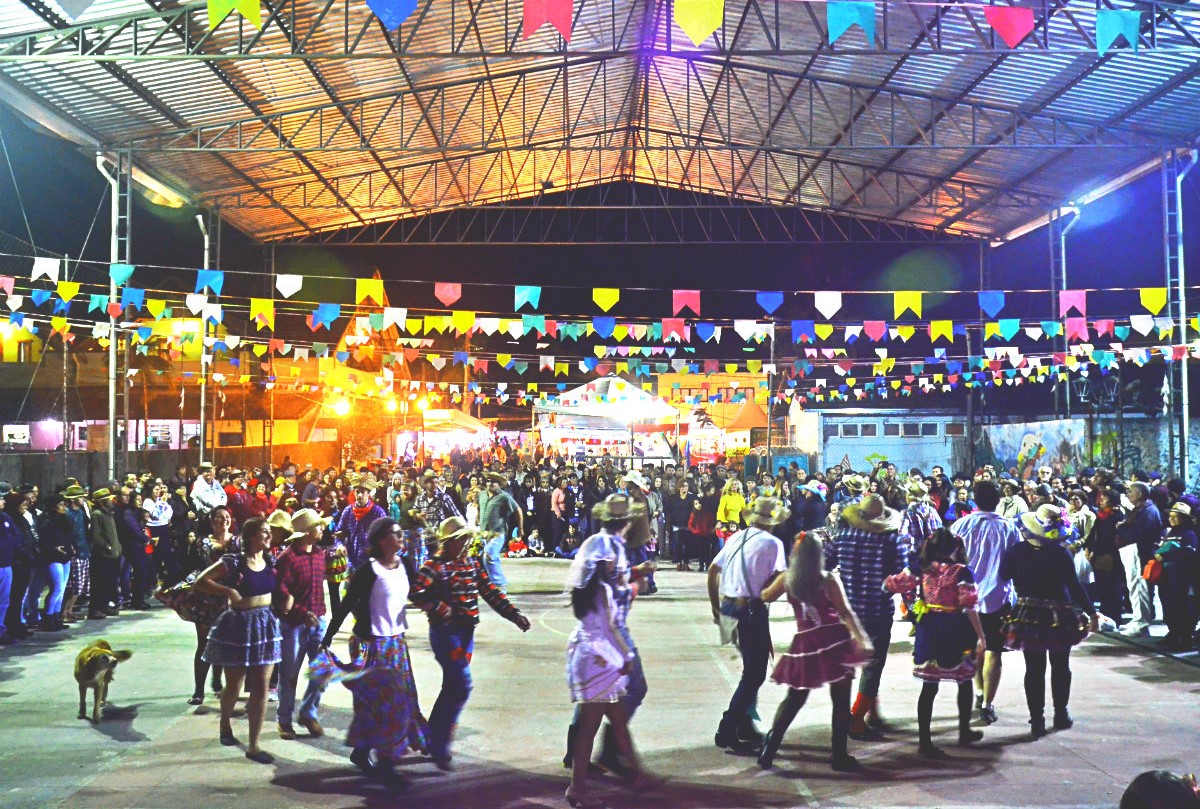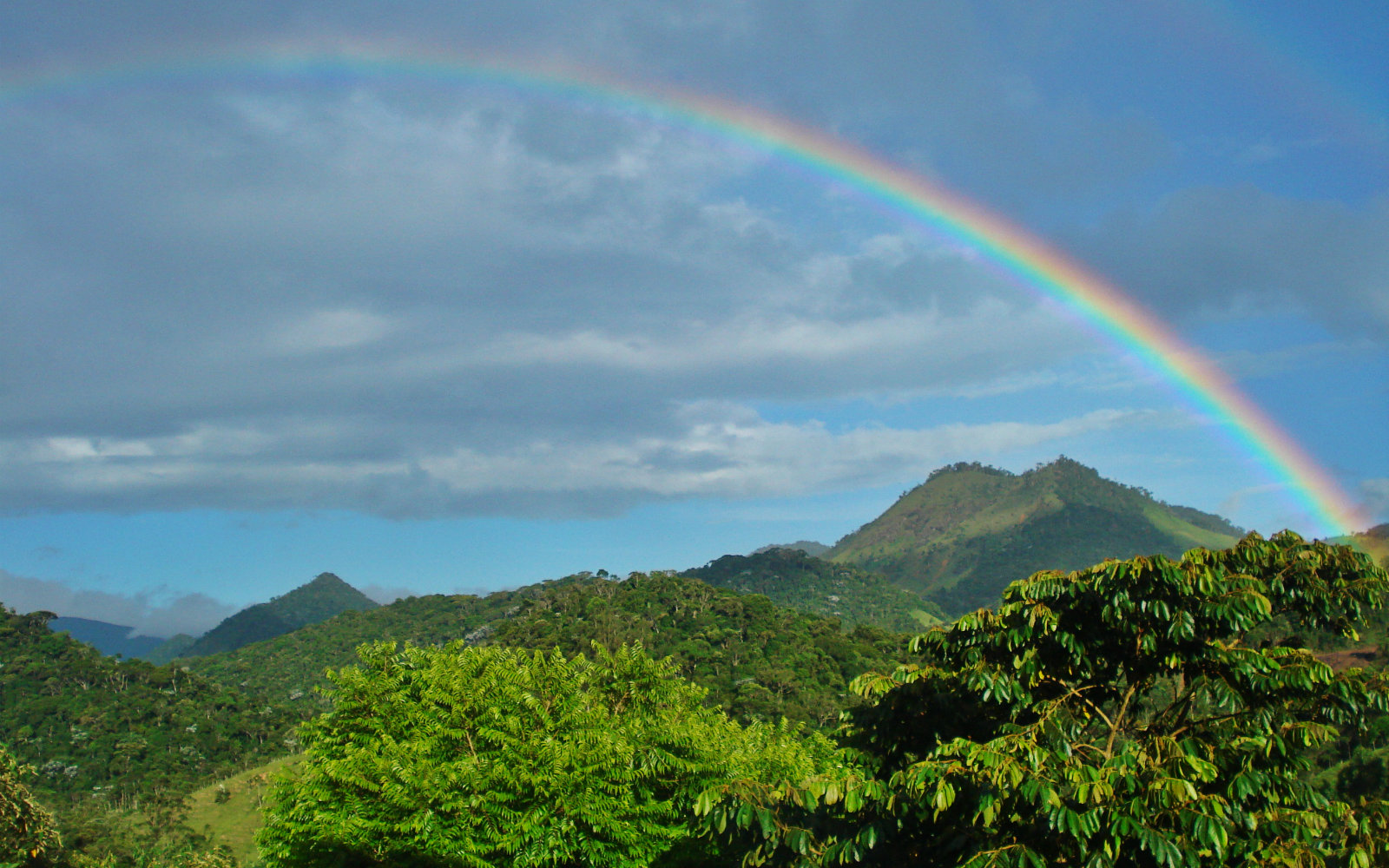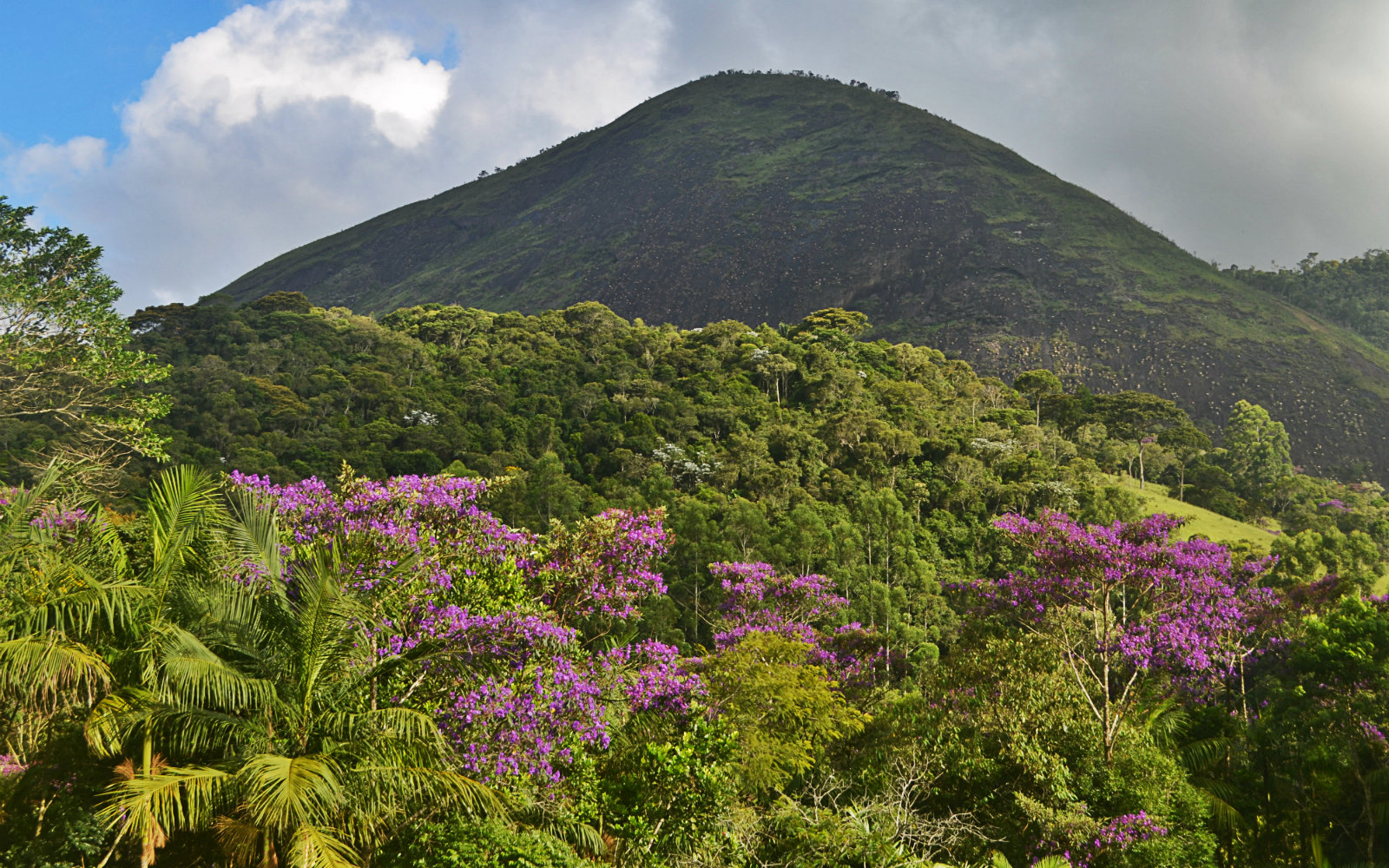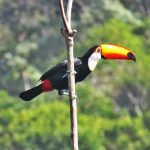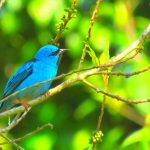The region within the scope of the project was first developed through the Swiss and German immigration coming to Nova Friburgo beginning in 1820, encouraged by the Portuguese Royal family.
These immigrants crossed the ocean in sailing ships in terrible conditions. Many received lots of land situated between mountains and abysses on land improper for cultivation. Some families came to the Macaé River valley, where they founded the villages of Lumiar and São Pedro da Serra in 1822.
In this process, according to the historian Jorge Miguel Mayer:
“The Swiss were more colonized than colonizers, absorbing the culture of the interior, adopting slash-and-burn, wattle and daub houses, with a diet based on manioc, corn and yams brought by the slaves.”
The typical local architecture is noteworthy, which marks the life style of a people living in material scarcity and structural difficulties, living in wattle and daub houses, which are part of the cultural heritage, built on a base of wood or stone on a small lot of elevated land for protection against the humidity and cold.
The first Catholic church in Nova Friburgo is in São Pedro da Serra, and is an interesting tourist spot, along with the bandstand and the large colonial house preserved by the traditional families, historical heritage of the village. In Lumiar, besides the very beautiful constructions characteristic of the colonial period, such as the large house situated in the central square, there is also the headquarters of the Sociedade Musical Euterpe Lumiarense, founded in 1891, which is now an active culture spot for the musical training of young people and adults.
The villages of Lumiar and São Pedro da Serra competed to be the administrative centre of the district of Lumiar, the oldest in Nova Friburgo, set up in 1889, which implied the switching of the land titles office seven times, first in one and then in the other, due to the political disputes between the most powerful local families. In 1931, Lumiar became the administrative centre of the district and in 1987, São Pedro da Serra was set up as the 7th district of Nova Friburgo in the dismembered lands of Lumiar.
Both villages remained in relative isolation until the mid-20th century. The agricultural production was taken to market by mule trains transporting coffee, pork, beans, manioc flour, potatoes, corn, goat, etc, initially along trails opened up through the forest, bringing back medications, sugar, rice, among other provisions. Only in 1959, at the initiative of a group of residents was the first dirt road opened up connecting Lumiar with Mury.
As of the 1970’s, the region began to receive hippies, mountaineers and followers of alternative philosophies, who were the first to be integrated and to interact with the local families. In 1977, Beto Guedes launched the song “Lumiar”, a big success among young people of the time, which contributed to making the village known nationally, increasing the flow of visitors. The paving of the RJ 142 highway linking Mury to Lumiar in 1982, and to Casimiro de Abreu in 2006 (Serramar highway), brought successive waves of tourists and summer visitors, as well as families coming in from the large urban centres who came to live in the region.
Many descendants of these first European immigrants still practice raising crops on their properties where the ways of the first colonists are still used, such as plantations of manioc, yams, banana, and in the herb gardens, the traditions and knowledge that are preserved going back to the way of life of their ancestors.
The everyday use of these products in the cuisine and the use of the medicinal herbs are part of the incredible cultural legacy of the residents of this place. The communities express their traditions in the festivals of saints, seasons and of farmers, as well as in the musicality and poetry of the viola circles, meetings of accordion players and in the many traditional forró dances of the region, along with the musicians and artists who have made this place their home.
Environmental Conservation
The beauty of the region fascinates those who come here and those who live here, and is an invitation to those seeking somewhere where they can really find “all the peace in the universe”, the slogan of São Pedro da Serra. Its valleys and mountains, covered with well preserved forests are renewed with each season in coloured tones of green, lilac, yellow and pink of the flowering of Quaresmas, Ipes, Paineiras and the silver of Embaubas, among so many other species of the Atlantic Rain Forest.
The development of Brazil over time is intimately related to the Atlantic Rain Forest in its different phases of occupation and exploitation. The Atlantic Rain Forest biome has diverse characteristics, as its area extends from the coast to the mountainous regions, from the Northeast to the South of the country, which has contributed to a rich and abundant biodiversity that is considered a worldwide hotspot. However, it is seriously under threat of extinction due to the continuous process of degradation. Thus, measures for its preservation and conservation are necessary and urgent.
This biome represents 13% of the national territory, where about 58% of the Brazilian population reside, with only 15% of the original coverage remaining which is highly fragmented. The state of Rio de Janeiro is the second in number of species of fauna threatened with extinction or already extinct, after only the state of São Paulo, and it is in the mountain region where most of the remaining species of the Atlantic Rain Forest are situated.
The Atlantic Rain Forest produces many benefits for the Brazilian population, denominated eco-systemic services, such as: regulation of the flow of water on the land and in the air, the fertility and containment of the soils and hillsides, the control of the climatic equilibrium, the supply of foods, the cycling of nutrients, the genetic biodiversity, as well as the scenic beauty, leisure and ecotourism, the generation of income and quality of life, the preservation or conservation of an immense historical and cultural heritage, among others.
The Altos da Serramar region is considered to be a “producer of water” due to the crystalline waters of the Macaé River, the largest river exclusively within the state of Rio de Janeiro, and of its tributaries, such as the Bonito River, and its countless water sources. Here waterfalls and bucolic places are hidden for pleasant river bathing or simply to wet your hands and feet.
The management of the waters of the Macaé River is done by the Committee of the Hydrographic Basin of the Macaé and das Ostras Rivers (Committee of the Macaé River), which aims at the sustainable use and conservation, with the objective of maintaining the quality and quantity of the waters for all uses.
These waters are used for agricultural activities, tourism and leisure in the mountain region, as well as supplying thousands of people in the municipalities of Macaé, Rio das Ostras and Casimiro de Abreu on the coastal plain. They are also fundamental for the productive process in the oil and gas industry and for the generation of electrical power in the two thermo-electrical power stations situated in Macaé.
The topology of the region is of highly differentiated relief, consisting of altitudes varying between 600 and 1,600 metres, which reconciles magnificently the mild climate of summer with the cosy cold of winter, with average temperatures between 24°C and 13°C.
The forestry formations of the region are denominated Dense Ombrophylous Forest, characterized essentially by climatic attributes of temperature and rains due to its position and altitude in areas close to the coast, which contribute to high levels of humidity. These climatic conditions are favourable to biological activity and influence the high level of biodiversity of these forests. Besides the forestry formations, there is also the countryside of altitude.
Knowledge about the vegetation of this area of the mountain region of Rio de Janeiro was pioneered by the Research Institute of Jardim Botânico of Rio de Janeiro, which identified the high level of richness of the local flora, with many endemic species and the rediscovery of species which had already been considered extinct.
Species found in abundance are the Embauba (Cecropia sp.), Quaresmeira (Tibouchina sp.), Açoita-Cavalo (Cupania oblongifolia), Camboatá (Cupania sp.), and almost always present on the banks of streams, Carrapeta (Guarea guidonia and Guarea macrophylla) and the Jussara Palm (Euterpe edulis), as well as other species with economic potential for various uses, such as foods, fuel, medicinal and ornamental. We highlight the Jussara Palm, threatened with extinction due to exploitation of the palm heart, known also as açai of the Atlantic Rain Forest, used as a food and for crafts.
Various animal species are reported in the region, notably oncilla (Leopardus tigrinus), sloth (Bradypus variegatus), jaguar (Puma concolor), ocelot (Leopardus pardalis), southern tamandua (Tamandua tetradactyla), buffy-tufted marmoset (Callithrix aurita), saffron toucanet (Pteroglossus bailloni), brown howler monkey (Alouatta guariba), spotted paca (Cuniculus paca), Brazilian guinea pig (Cavia aperea), armadillo (Dasypus novemcinctus), red brocket (Mazama americana), scaly headed parrot (Psittacidae family), (Cariama cristata), saffron finch (Sicalis flaveola), rufous-bellied thrush (Turdus rufiventris), peacock (Penelope sp.); opossum (Didelphis marsupialis), among many others.
Of these species cited, various are threatened with extinction. The group with the greatest richness of species in the region is that of the birds, including two of the five species endemic to Rio de Janeiro, also threatened with extinction (Tijuca condita and Myrmtherula fluminensis), as well as the 144 species endemic to the Atlantic Rain Forest.
One of the threats to the biodiversity of the region is the introduction of exotic species, which is indicated as the second largest cause of the destruction of biological diversity, preceded only by the degradation of the habitat by human activities. Some examples of the species introduced to the region are cats, rainbow trout, pigeons, chickens and dogs. Other threats to the local nature are land speculation, the lack of basic sanitation, hunting and deforestation.
The member properties of Altos da Serramar are within the State Environmental Protection Area of Macaé de Cima (APAMC), or in the Sustainable Use neighbouring Nature Conservation Unit, which have the objectives:
• To preserve, conserve and protect the Atlantic Rain Forest, its fauna and flora;
• To preserve the countless water sources and rivers;
• To promote development with the use of environmentally sustainable agricultural practices;
• To conserve the local culture;
• To support alternatives for income generation and sustainable tourism.
The APAMC territory is one of the principal remaining areas of Atlantic Rain Forest in Rio de Janeiro, with great importance for the conservation of this biome.
The principal urban centres of the APAMC are the villages of Lumiar and São Pedro da Serra, but also involve other villages, such as Macaé de Cima, Rio Bonito de Lumiar, Toca da Onça, Galdinópolis, Benfica, Boa Esperança, among others.
The Plans that orient the environmental management of the Macaé River basin and APAMC stimulate sustainable practices, such as those developed on the properties of this guide, which function as a source of income and promote sustainable, ethical tourism linked to the local culture.



